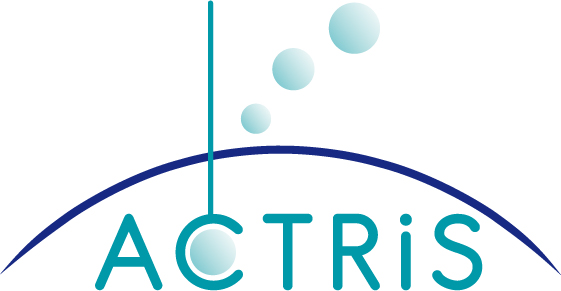Projects
This project aims at exploring the El Niño-Southern Oscillation (ENSO) influence on the tropical North Atlantic (TNA) sea surface temperature (SST). The SST variability in the TNA region has been observed to affect weather and climate in surrounding areas, including European heatwaves, tropical Atlantic hurricane activity, the West African monsoon, and rainfall over...
Theoretical Chemistry and Computational Modelling (TCCM) is emerging as a powerful tool to helpin the rational design of new products and materials for pharmaceutical, chemical, energy, computerand new-materials industries. To achieve this goal, it is necessary to go beyond the traditional electronic structure studies, and merge complementary techniques that are normally not...
ACTRIS-2 addresses the scope of integrating state-of-the-art European ground-based stations for the long term observation of aerosols, clouds and short lived gases by capitalizing on the work of FP7-ACTRIS. ACTRIS-2 aims to achieve the construction of auser-oriented RI, unique in the EU-RI landscape. ACTRIS-2 provides 4-D integrated high-quality data from near-surface to high...
Hi-EST aims to address a new class of placement problem, a challenge for computational sciences that consists in mapping workloads on top of hardware resources with the goal to maximise the performance of workloads and the utilization of resources. The objective of the placement problem is to perform a more efficient management of the computing infrastructure by continuously...
High-fidelity flow simulation is one of the main goals to pursue in the research towards exascale computing. This capability will allow a cheaper exploration of aeronautical and automotive designs that fulfill energy consumption and noise emissions policies of the European agencies. In this project, the integration of three high-performance tools will be studied as a...
EUDAT2020 brings together a unique consortium of e-infrastructure providers, research infrastructure operators, and researchers from a wide range of scientific disciplines under several of the ESFRI themes, working together to address the new data challenge. In most research communities, there is a growing awareness that the rising tide of data will require new approaches to...
We are entering the Cyber-Physical age, in which both objects and people will become nodes of the same digital network for exchanging information. Therefore, in our imaginary, the general expectation is that things or systems will become somewhat smart as people, allowing rapid and close interactions not only system-system, but also human-system, system-human.
PRACE, the Partnership for Advanced Computing, was established in May 2010 as a permanent pan-European High Performance Computing service providing world-class systems for world-class science. Six systems at the highest performance level (Tier-0) are deployed by Germany, France, Italy and Spain providing researchers with over 9 billion core hours of compute...
SAFURE targets the design of cyber-physical systems by implementing a methodology that ensures safety and security "by construction". This methodology is enabled by a framework developed to extend system capabilities so as to control the concurrent effects of security threats on the system behaviour. The current approach for security on safety-critical embedded systems is...
Understanding the human brain is one of our most significant scientific challenges. Such an understanding can provide profound insights into our humanity, leading to fundamentally new computing technologies and transforming the diagnosis and treatment of brain disorders. Modern ICT brings this prospect within reach.
The HBP Flagship Initiative (HBP)...








